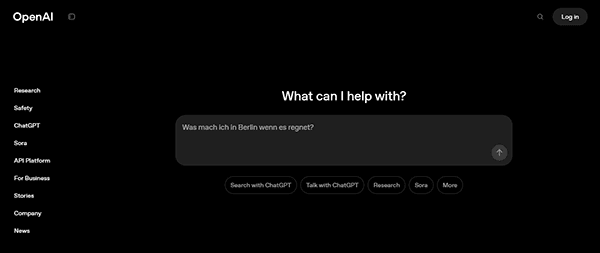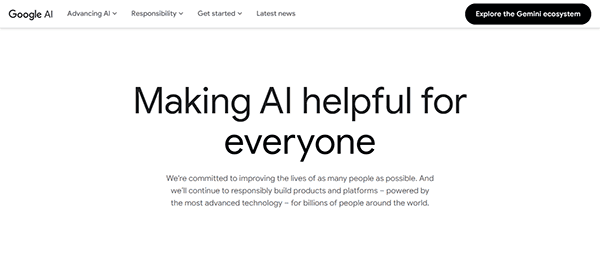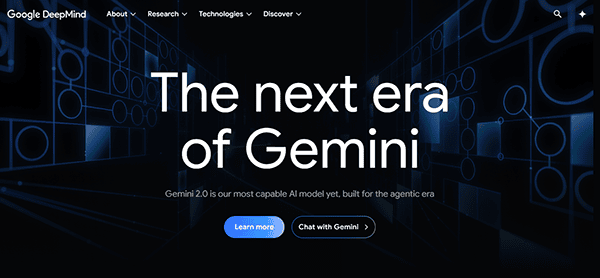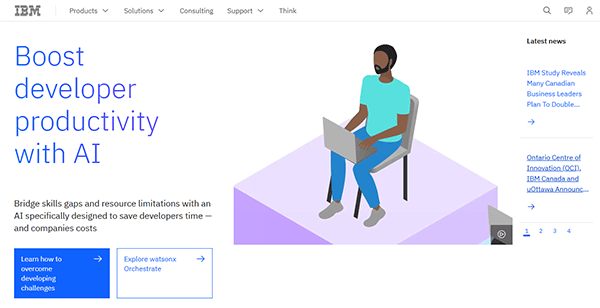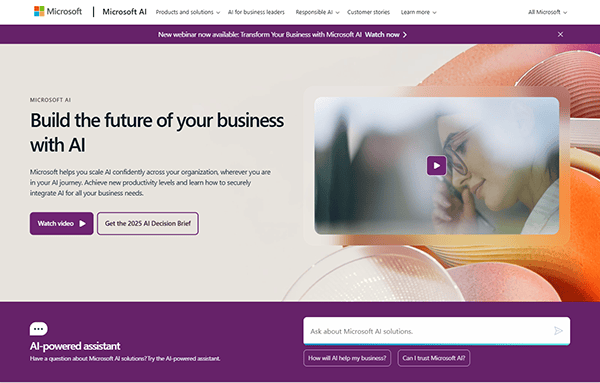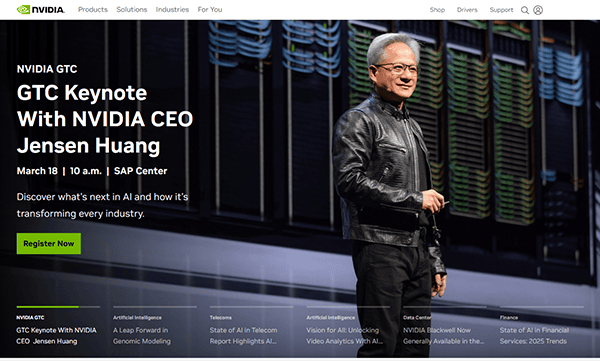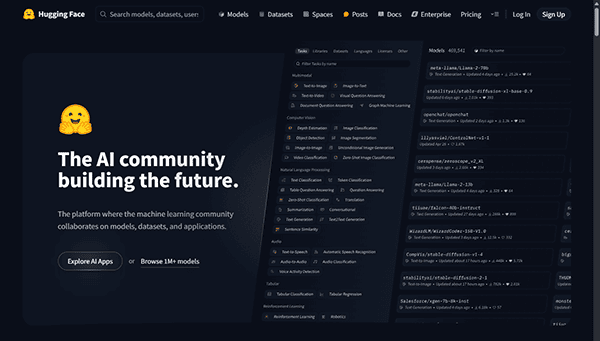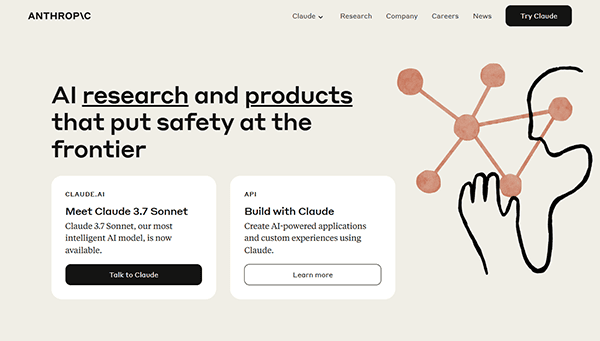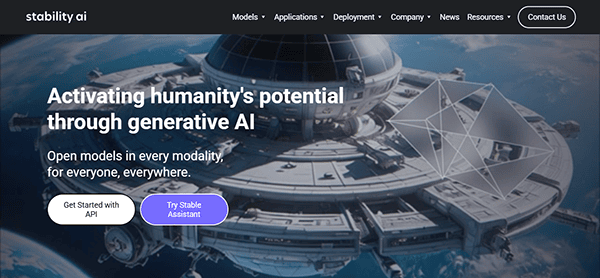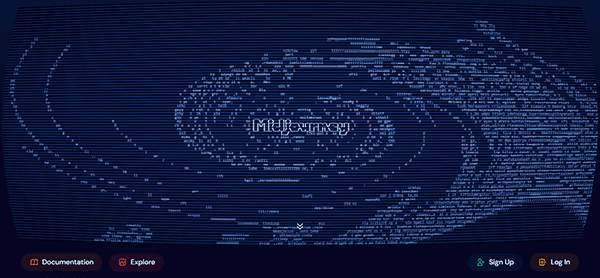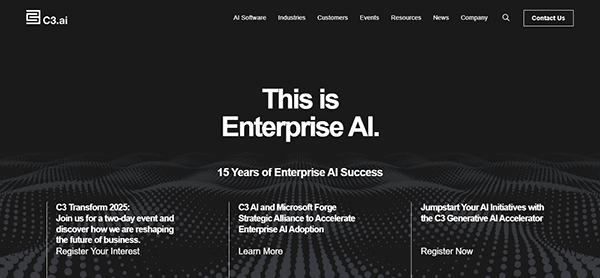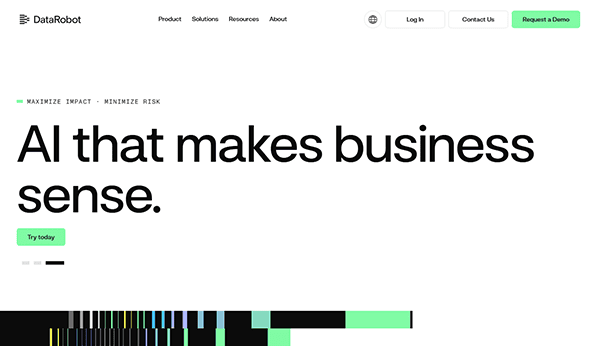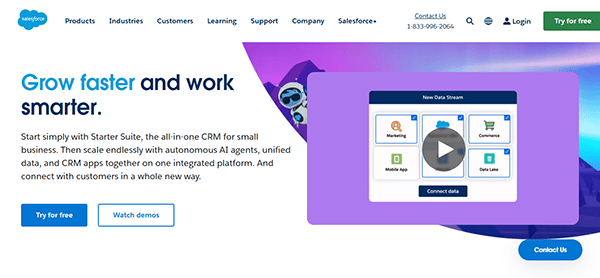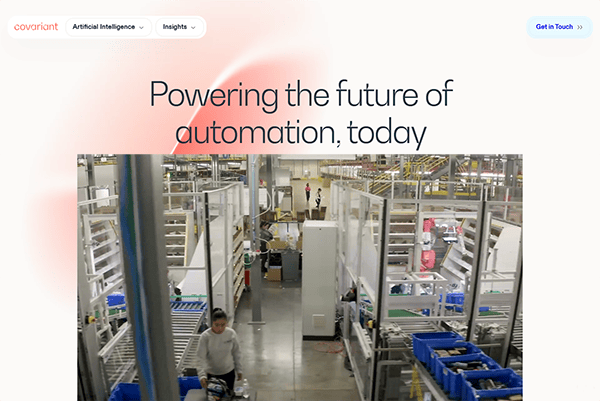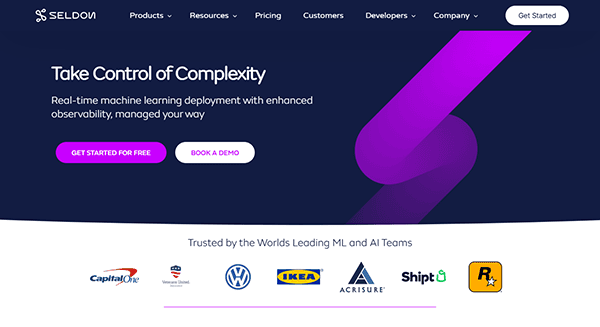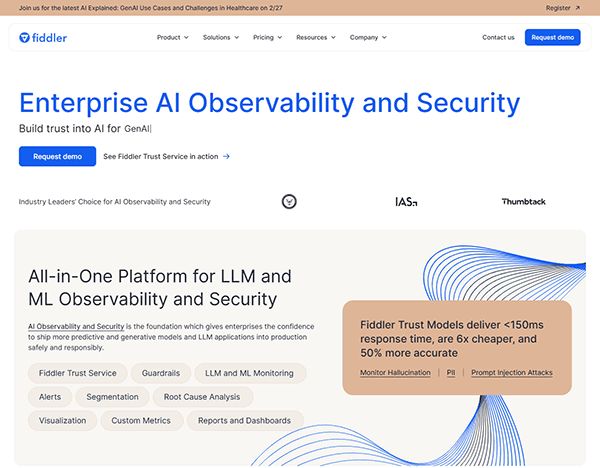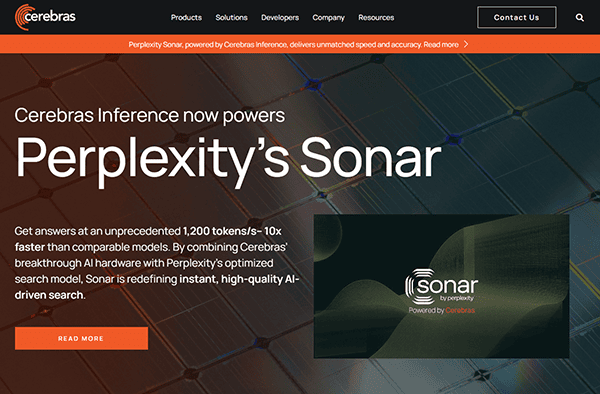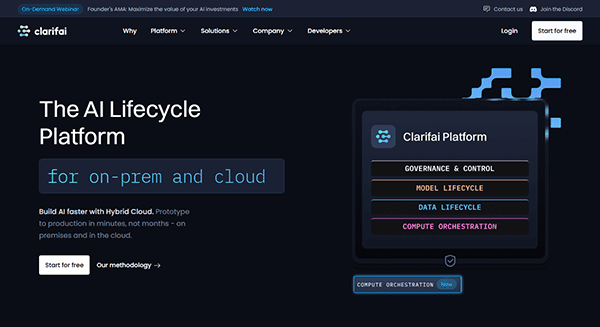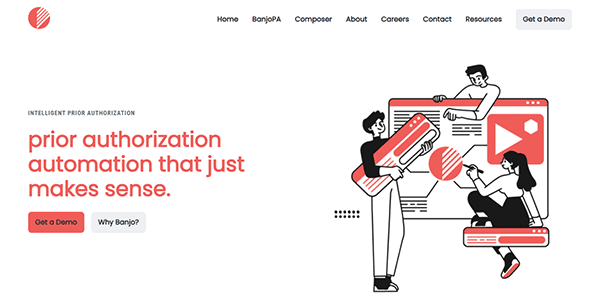Artificial Intelligence (AI) has swiftly become one of the most transformative forces across numerous industries. By leveraging machine learning, deep learning, and natural language processing, AI companies are reshaping how businesses operate and individuals interact with technology. Whether you’re interested in advanced robotics or simply looking to streamline data processing, AI offers powerful solutions that can dramatically enhance productivity.
A well-designed AI website can make complex concepts more accessible, educate potential users, and demonstrate innovative capabilities. It’s not just about flashy graphics or trendy layouts—these digital platforms must present sophisticated technologies in a user-friendly and engaging manner. If you’re thinking of creating or revamping your AI-focused online presence, be sure to consider the unique challenges of showcasing cutting-edge innovation in a clear and compelling format.
If you’re ready to get started on your website project, visit CyberOptik’s website design page to learn more about what goes into building a top-tier AI-focused website. Let’s dive into 20 standout examples of how the best AI websites are setting new standards in the industry.
Examples of the Best AI Website Designs
- OpenAI: OpenAI has a sleek, minimalistic design that immediately draws you in with a high-contrast layout. The homepage focuses on intuitive navigation, guiding visitors through their API offerings, research milestones, and community-focused initiatives. Each section offers concise yet informative descriptions of AI models like GPT, providing a technical overview without overwhelming newcomers. The site’s use of whitespace creates a sophisticated environment, making it clear that OpenAI is focused on cutting-edge research. The call-to-action buttons are strategically placed, allowing users to sign up for updates or explore key projects.

- Google AI: Google AI presents its vast range of AI initiatives with a clean and modern interface. Scrolling reveals well-organized sections that highlight breakthroughs in machine learning, research publications, and developer tools. Large, vibrant images and clear typography showcase Google’s emphasis on innovation and accessibility. The navigation menu allows you to easily discover various AI products like TensorFlow and Cloud AI solutions. Subtle animations bring life to the platform without distracting from essential content. Overall, the site underscores Google’s leadership in AI by combining creative design elements with substantial resources for researchers and developers.

- DeepMind: DeepMind is known for pioneering advancements in reinforcement learning and other facets of AI. Their website offers an appealing balance of visual storytelling and detailed technical insights. The homepage immediately immerses you in their latest breakthroughs and publications, all arranged in a grid-like format. Eye-catching graphics illustrate complex concepts in an accessible manner. Navigational elements are intuitive, making it easy to explore different research domains, internships, and career opportunities. DeepMind’s emphasis on its mission—to solve intelligence—flows seamlessly throughout, reflecting a brand committed to profound scientific progress and ethical AI research.

- IBM Watson: IBM Watson combines the established IBM brand with forward-thinking AI features. The layout quickly orients users to Watson’s capabilities in language processing, data analytics, and more. A crisp color palette of blues and whites gives the site a professional, tech-savvy feel. Each AI solution has its own dedicated page, complete with case studies, demos, and integration details. The navigation ensures that prospects can quickly learn how Watson might serve their industry, whether healthcare, finance, or retail. This organization, coupled with IBM’s storied reputation, adds credibility and encourages deeper exploration.

- Microsoft AI: Microsoft AI leverages a bold, image-rich design that communicates innovation and engagement. Dynamic banners showcase real-world applications of Microsoft’s AI platforms, including Azure Cognitive Services and conversational AI. The site’s design makes complex solutions easy to digest, with clearly labeled sections that detail capabilities, success stories, and development tools. Smooth scrolling and well-placed calls to action lead visitors to try out demos or explore documentation. It effectively presents Microsoft’s extensive AI ecosystem as a suite of flexible, powerful tools that can be customized for diverse projects and industries.

- NVIDIA AI: NVIDIA AI showcases a highly polished look, pairing vibrant imagery with a futuristic design that reflects its focus on graphics processing and AI. Visitors are greeted with an immersive banner highlighting the latest GPUs and AI developments. Navigational elements guide you to solutions in healthcare, automotive, and data center applications. Throughout the site, concise content blocks break down complex GPU acceleration topics. The brand’s signature green color is used strategically to accent key information. Calls to action prompt you to learn about developer resources, making the platform equally engaging for both business leaders and technical experts.

- Hugging Face: Hugging Face offers a vibrant and welcoming platform for natural language processing and AI enthusiasts. The site’s lively design breaks down advanced machine-learning concepts into more approachable segments, encouraging broader participation. A community-driven approach is evident through forums, tutorials, and open-source projects that users can explore. With pastel color accents and engaging icons, Hugging Face creates a friendly environment for developers and researchers alike. Navigation highlights popular libraries, datasets, and community spaces, making it easy for visitors to jump right into experimentation or collaboration. This open, inclusive ethos is woven throughout the entire user experience.

- Anthropic: Anthropic maintains a minimalist layout that places emphasis on textual clarity and scientific rigor. The homepage immediately presents its mission: to build reliable, interpretable, and steerable AI systems. The clean typography and subtle color gradients exude professionalism. Each section delves into different facets of their research, highlighting topics like AI alignment and ethics. Brief yet impactful messaging keeps you informed without overwhelming technical jargon. The site places a strong emphasis on the real-world impact of AI, underscoring its dedication to safe and beneficial AI solutions. Visitors can delve deeper into research publications or learn about open roles.

- Stability AI: Stability AI boasts a sleek, modern interface that utilizes large, high-resolution graphics and dynamic scrolling. The site’s aesthetic is as innovative as the company’s mission—open-sourced AI tools for image generation, text analysis, and more. Each product and service is laid out in an easy-to-follow style, allowing visitors to explore features and real-world examples. Brief success stories and community highlights demonstrate how accessible and versatile their solutions can be. A well-structured blog updates users on new partnerships and technological advancements, further illustrating their commitment to ongoing development and collaborative progress.

- Midjourney: Midjourney captivates users with a visually stunning interface that matches its AI-driven artistic focus. Bold imagery immediately showcases the platform’s ability to generate unique artwork and designs. Minimal text on the homepage is complemented by concise call-to-action buttons guiding users to demos, examples, and community spaces. The site also incorporates user-generated pieces and contests, encouraging a sense of community and collaboration. Smooth animation transitions enhance the experience without overshadowing the central theme of creativity. Midjourney’s design effectively conveys its identity as a powerful yet accessible tool for AI-driven artistic endeavors.

- C3.ai: C3.ai targets enterprise-scale AI needs with a clean, corporate-oriented design. The site greets visitors with strong value propositions, explaining how AI can deliver measurable ROI in various industries. Neatly organized solution overviews and industry-specific pages assist decision-makers in assessing potential use cases for C3.ai’s platform. The layout is punctuated by case studies showcasing impactful results for major clients. Iconography and subtle animations keep the interface engaging while maintaining a professional tone. This careful balance positions C3.ai as a trustworthy partner for organizations seeking robust, large-scale AI implementations.

- DataRobot: DataRobot places an emphasis on automated machine learning, featuring an approachable site design that guides visitors step by step through the benefits of AI automation. Concise text blocks, complemented by well-chosen imagery, help simplify complex workflows for business users. Bright accent colors draw attention to calls to action and case study highlights, where you can learn how DataRobot solves real-world problems. A blend of dynamic data visualizations and straightforward language communicates the company’s mission without alienating non-technical audiences. This balance makes DataRobot a compelling choice for businesses looking to accelerate AI adoption.

- Dataiku: Dataiku uses a warm, inviting design to introduce its AI platform for enterprise data teams. The homepage’s hero section presents a succinct overview of Dataiku’s features and a prompt to learn more via demos and tutorials. Interactive elements provide clarity on how teams can collaborate on data projects within the platform. Rich visuals, including screenshots of actual dashboards and tools, offer transparency into the product’s functionality. Strategic use of bold typography emphasizes key selling points, like user-friendly integrations and robust analytics capabilities. It’s an engaging site that invites exploration from both executives and data scientists.
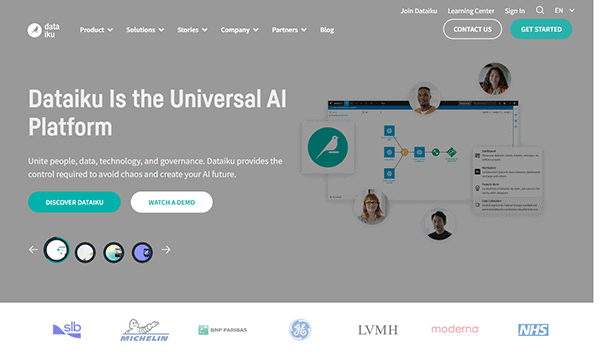
- Salesforce Einstein: Salesforce Einstein seamlessly aligns with Salesforce’s signature branding while spotlighting its AI-driven CRM features. A large header image highlights how Einstein automates tasks, analyzes customer interactions, and provides predictive insights. Below, well-defined sections discuss how AI fits into different Salesforce modules such as sales, service, and marketing. Colorful icons and diagrams break down advanced capabilities into digestible parts. Embedded success stories and testimonials serve to validate the effectiveness of Einstein. The result is an engaging, business-focused platform that underscores Salesforce’s commitment to integrating AI into everyday workflow and customer management solutions.

- Covariant: Covariant stands out for its focus on AI-driven robotics. The site features full-screen videos that immediately demonstrate Covariant’s solutions in action, such as robotic arms automating warehouse tasks. The sleek, modern layout prioritizes visual storytelling, providing short textual explanations paired with rich media content. This approach underscores the tangible impact of AI in a physical setting. Links to whitepapers and press coverage offer deeper insights for those wanting more technical details. Overall, Covariant’s design choice effectively highlights its core value proposition: enabling robots to see, reason, and act in real-world environments.

- Seldon: Seldon specializes in MLOps solutions, and its website conveys that technical expertise with clean, professional styling. The homepage references industry buzzwords like “model deployment” and “monitoring” yet clarifies these concepts through infographics and short explanations. A subdued color scheme draws attention to important headers and calls to action. Navigation is straightforward, leading users to discover solutions, product features, and partner programs. By integrating customer stories and demonstration videos, the site effectively shows how Seldon supports the entire AI lifecycle, from testing to continuous improvement of machine learning models.

- Fiddler AI: Fiddler AI focuses on explainability and transparency in AI models, making trust a core theme throughout the site. Visitors are greeted with a concise tagline and an image depicting how the platform elucidates black-box models. Subtle gradients and animated elements give a modern flair without overshadowing the informative content. Short paragraphs and bullet points clarify how Fiddler AI helps in model monitoring, fairness assessment, and regulatory compliance. Each product page is supplemented by brief demo videos that visualize advanced concepts. This approach ensures that even non-technical audiences understand the critical importance of responsible AI.

- Cerebras: Cerebras is known for its innovative hardware, which is designed to accelerate AI workloads. Their website highlights the powerful CS-2 system through striking graphics and easily digestible data points about performance gains. The color palette uses strong contrasts to emphasize the uniqueness of their wafer-scale engine. Technical specifications are balanced by simplified explanations, ensuring that both engineers and executives can benefit from the content. Calls to action prompt visitors to request further information or read in-depth whitepapers. Cerebras effectively balances technical depth with an engaging design that underscores its groundbreaking hardware solutions.

- Clarifai: Clarifai embraces a bright, approachable design to showcase its AI-driven image and video recognition tools. The homepage immediately presents use cases across e-commerce, public safety, and more, showing how computer vision can solve diverse problems. Clean iconography and thoughtful typography guide visitors through product capabilities and integration options. Testimonials from well-known clients add social proof, making the solutions more compelling. By featuring a simplified trial sign-up process and a wide range of developer resources, Clarifai makes it easy for businesses to begin harnessing the power of AI-driven visual recognition.

- Banjo: Banjo Health’s website has a clean and professional design that effectively conveys its focus on intelligent prior authorization solutions. The navigation menu is clear and concise, and the homepage highlights the platform’s benefits with brief text and engaging visuals. Its straightforward navigation allows users to easily find key sections, such as BanjoPA, Composer, and company information while emphasizing features like AI-built decision trees and faster response times. To enhance user experience, the site should ensure that all images and videos are properly loaded and implement responsive design techniques to improve accessibility across various devices. Overall, the website effectively communicates Banjo Health’s mission but could be improved with technical optimizations.

These 20 websites exemplify how AI-driven companies can use design, navigation, and storytelling to engage diverse audiences. Whether demonstrating highly technical content or showcasing real-world success stories, each site makes a strong statement about the potential of AI. From massive corporations to specialized startups, the common thread is the emphasis on clarity—ensuring that complex machine learning solutions are presented in a digestible and appealing manner.
When planning your own AI website, consider how you’ll convey your unique value proposition, engage readers with cutting-edge visuals, and still maintain a level of transparency. Audiences will want to understand not just the “wow” factor of AI but also how it can be applied to solve real problems, streamline operations, or enhance customer experiences. The best AI websites can bridge the gap between tech-savvy developers, curious stakeholders, and prospective clients eager to explore new possibilities.
If you’re aiming to carve out a space in this ever-evolving industry, take inspiration from these standout designs. Incorporate strong visuals, straightforward messaging, and an intuitive flow that guides visitors to the resources they need—whether it’s documentation, customer success stories, or a product demo.
Top 10 Important Aspects of an AI Website
- Clear Value Proposition: Articulate how your AI solutions benefit users or businesses, establishing trust and clarifying what sets you apart.
- Simplified Technical Concepts: Use plain language and visuals to explain complex AI or machine learning functionalities, making them accessible to diverse audiences.
- Engaging Visuals and Videos: Showcase your technology in action through demos, graphics, or animations that capture attention and demonstrate real-world impact.
- Easy Navigation: Organize content logically, ensuring visitors can find relevant information—like documentation or case studies—without confusion.
- Credibility Indicators: Incorporate testimonials, case studies, or press mentions to strengthen trust and highlight proven results.
- Community and Support: Offer forums or resource centers that encourage user interaction and foster an ecosystem around your AI solutions.
- Responsive Design: Ensure the site functions smoothly across all devices, as users will access your AI platform from desktops, tablets, and smartphones.
- Strong Calls to Action: Provide multiple opportunities for visitors to sign up, request demos, or download resources, guiding them through the sales funnel.
- In-Depth Resources: Offer technical documentation, whitepapers, and tutorials for those seeking more profound insight into your AI offerings.
- Transparent Ethics and Security: Clearly address data privacy, model fairness, and other ethical considerations to reassure users of your responsible AI practices.
Frequently Asked Questions about AI Web Design
How can I make my AI website stand out from competitors?
Begin by focusing on a user-centric design that highlights the tangible benefits of your AI solutions. Infuse your brand’s unique personality through visuals, success stories, and an intuitive layout, making it easier for visitors to understand your distinct advantage.
What platform is best for building an AI website?
WordPress often proves to be a versatile and user-friendly option, offering countless plugins and themes that can be customized. It also integrates well with most analytics and marketing tools needed for a dynamic AI website.
How much does it typically cost to design an AI website?
A basic website can start around $2,000 and go up as you incorporate complex features like interactive demos, advanced data visualizations, and custom integrations. The final cost depends on design complexity and the functionality required.
How often should I update my AI website?
Regular updates signal growth and new developments in your AI technology, but don’t update just for the sake of it. Ensure each update brings genuine value to your visitors, such as new features, case studies, or security improvements.
What are the essential elements of an effective AI website design?
Focusing on clarity, strong visuals, and intuitive navigation helps your audience quickly grasp complex technologies. Showcasing real-world success stories and providing detailed resources builds trust, encouraging deeper engagement with your AI solutions.
Ready to elevate your AI’s website? Contact CyberOptik for a free proposal for your new AI website design and set your business up for success.


